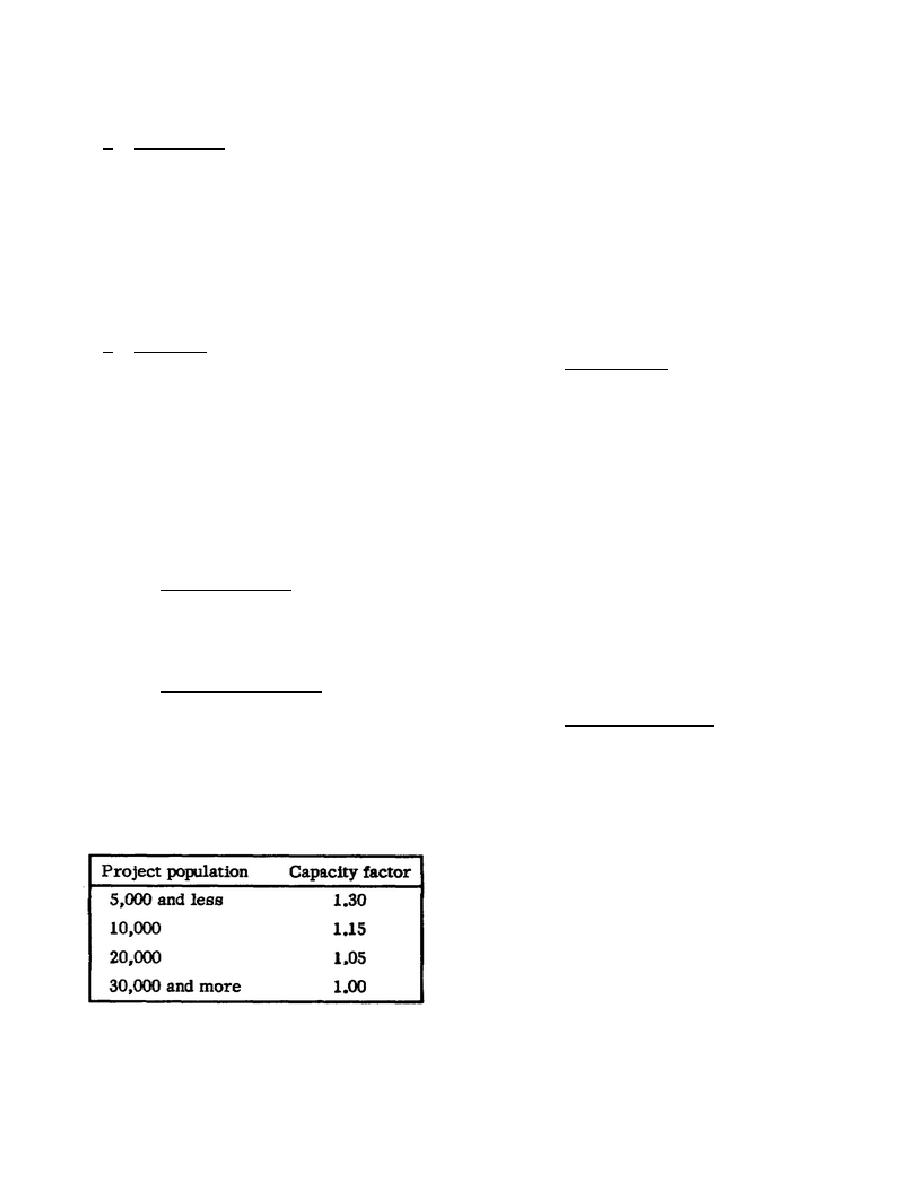
it should not be considered if other
The capacity factor for populations
more reliable sources are available.
between
those
indicated
may
be
determined
by
straight
line
b. Collection.
The
collecting
The design population
surface
may
be
constructed
of
is
obtained
by
multiplying
the
tarpaulins supported by wood, metal,
authorized population by the proper
or concrete, and elevated so that
capacity factor: Design population =
water drains into tanks.
After the
Actual population x Capacity factor.
water has been collected, the tanks
The
capacity
factor
provides
for
should be covered to safeguard the
reasonable increases in population,
water from further contamination and
uncertainties as to actual quantities
and characteristics of sewage, and
unusual peak flows, the magnitude of
7.
EVALUATION OF SOURCES
which cannot be accurately determined
in advance.
a. Quantity.
In choosing a source
of water, quantity, quality, and ease
(3) Large users.
Large users is
of development must be considered. If
the term applied to those facilities
it is possible to find a source having
which
use
water
at
rates
not
all three of these characteristics,
necessarily
related
to
population.
that source will be chosen. The basic
Such
facilities
include
laundries,
requirement, however, is enough water
maintenance shops, and other common
to
satisfy
the
needs
of
an
support
type
facilities.
The
installation and therefore quantity
requirements of these large users are
will be the overriding consideration.
determined by checking with them. The
To properly evaluate the quantity of
sum of the average demand multiplied
water the following four factors must
by the design population and the
be considered:
demand of the large users is called
the required daily demand or the total
(1) Average demand.
This is the
daily requirement.
per capita allowance of water (usually
expressed in gallons per day per man--
Required daily demand = (Avg demand x
gpd/man).
This value varies with the
design pop) + large users.
Besides
standard and type of construction.
supplying this requirement, the source
must also provide enough water for
(2) Design population.
This is
firefighting.
the actual (or expected) population of
an
installation
multiplied
by
a
(4) Fire protection.
In the
capacity factor.
The capacity factor
theater of operations, water required
takes into account the difficulty of
for
fire
protection
will
not
be
holding to a prescribed average usage
treated.
Generally, no distribution
in small installations.
Capacity
system will be built, except for the
factors are given in table 1.
installation of sufficient pipe to
carry
the
water
from
the
source
to conveniently located fire sumps.
Table 1.
Capacity Factors
The
sumps
should
be
located
so
that
any
building
or
facility
can be reached with not more than
1,000 feet of hose.
Water is pumped
from the tanks or sumps by a fire
pumper or skid-mounted pump.
The
amount of water to be stored will
be
based
upon
population
and
an
assumed number of fires occurring at
any one time.
For populations below
3-9



 Previous Page
Previous Page
